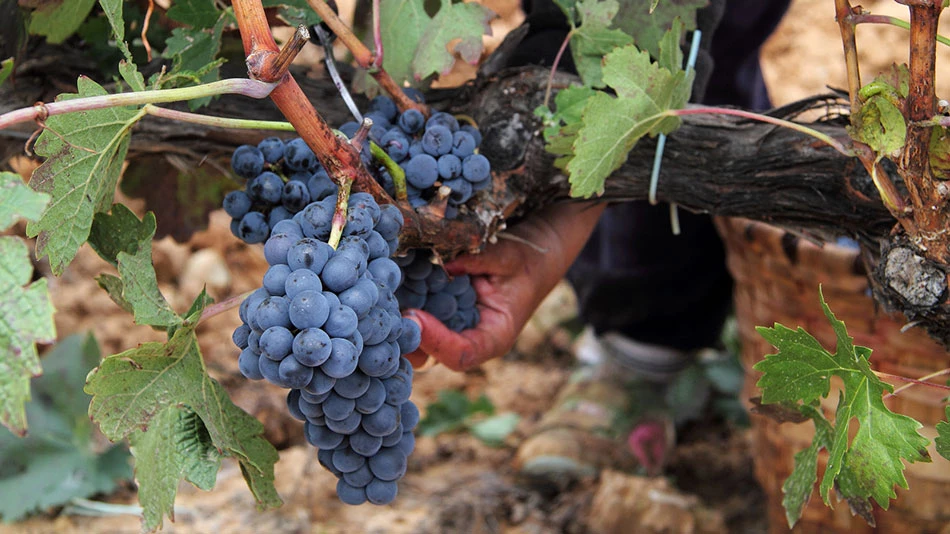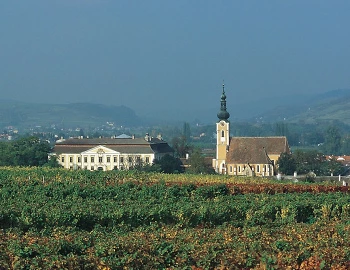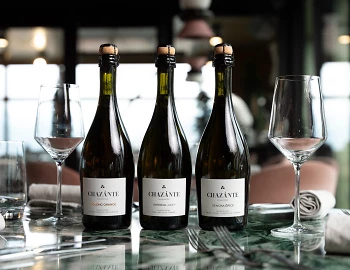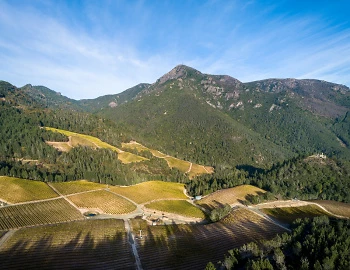Viñedos y Bodegas García Figuero
The history of this Bodega is a prime example of those who do not let themselves be led astray, consistently and persistently go their own way, remain faithful to their convictions and who then reap the well-deserved success.
José María García was born in 1936 into a modest wine-growing family in the village of La Horra in Castile. At the age of 25, he married young Milagros Figuero from the same village, whose parents were also wine growers. The land belonging to the two families, which was planted with Tempranillo vines like virtually everywhere in Ribera del Duero, was subsequently merged and is the foundation of the modern family history today.
La Horra is located on a line between the villages of Sotillo in the North and Roa in the South, on the banks of the Duero River, which crosses the Spanish "Meseta" - a high-level plateau - from east to west. Driving to the provincial capital of Aranda del Duero takes approximately 20 minutes going east, over the rather flat countryside where vineyards alternate with corn and vegetable fields.
The first cellar building, designed in a traditional style, was inaugurated in 2001. This was the starting point for the García Figuero family to produce their own wine. Up till then, they had traditionally been grape suppliers. Their Tempranillo was highly appreciated by renowned wineries, above all by the world famous Bodega Vega Sicilia, because José María García always worked with the utmost care and experience accumulated over several generations. In particular, he kept and nurtured (and still does) a unique treasure: his own Tempranillo clones, which came from vines dating back to the great phylloxera plague. Over years and decades, he continuously multiplied his best plants, so that we can now speak of a unique Figuero clone.
His dream was to make his own wine from his own grapes. He wanted to transfer the high standard of work in the vineyard to the cellar as well. And so in 2001, he was able to realise his vision for the first time, along with his wife and their three children, Antonio, Henar and Carlos, who were now ready to assume responsibility in the family business.
Today, José María García proudly overlooks many old vineyards, producing the best wine from vines which are 50 to about 90 years old. Counting the younger plantations, he is the master of a stately 85 hectares, spread over 34 plots which are located in the heart of the best locations in Ribera del Duero. The soils mainly consist of lens-shaped, clayey layers of sand alternating with calcareous marls. Per hectare, depending on the vintage, 2,500 to 3,500 kg of grapes are harvested, representing approximately 20 to 28 hectolitres per hectare. Compared to Bordeaux, for example, where about 40 hectolitres are common, this is a low yield, which is due to the quality requirements and of course to the climate.
La Horra is located at 800 metres above sea level, protected to the north by ridges against the cold winds from the Atlantic Ocean. Pronounced fluctuations over the seasons and large temperature differences between day and night shape this continental climate with a Mediterranean influence. The summers are hot with peak temperatures of up to 40°C and the winters severe and long with lows down to -16°C. You can count on more than 2,400 hours of sunshine in the year. The precipitation level is rather low with 450 millimetres.
This climate favours a prudent, near-natural cultivation of vines, which requires only minimal intervention and can largely do without chemical protective measures. A large part of the plants are traditionally grown "en vaso" (gobelet cut) and not in a modern wired training system. They are therefore better protected against the harsh sun in summer. José María García watches with eagle eyes over his vine and the employees at the vineyard. Despite his age, he can still show everyone how things are done, such as properly pruning or shoot thinning. Weeding is carried out by hand; the careful manual harvest with the traditional chestnut wood baskets is only natural.
The first cellar building proved soon to be too small, thus the new and modern Bodega with its striking design was added in 2007. It was built into a gentle slope to take advantage of gravity for all wine making processes, thus avoiding crude pumping. Cellar and room climate are regulated naturally by means of ventilation ducts, so-called "zarceras", as was traditionally done for Bodegas since the 13th century.
Óscar Rodríguez and Jean François Hébrard are responsible for the cellar and the wine-making process. It is up to them to complete the work undertaken in the vineyard using all their talent and experience. To do this, they follow two different approaches.
Figuero 4 - Roble, Figuero 12 - Crianza and Figuero 15 - Reserva follow the traditional style of winemaking. The Milagros de Figuero, Viñas Viejas, Noble and Tinus are rather an expression of the modern understanding of great wines of our time. They reflect the particular vintage and the selected plots – their origin, their terroir.
The carefully controlled grapes are all de-stemmed and cold macerated for a few days. They are spontaneously fermented with natural yeasts. For all wines, the maturation takes place in French or American oak barrels, mainly oak barriques, and in this respect, they are constantly experimenting and selecting. Nowadays, more and more French barrels are used. Also, for certain wines, larger 500 litre barrels are being used.
The García Figuero family offers a matching Figuero for every wine lover, for every taste, for every budget, and for any occasion. This is an ambitious pledge that this establishment obviously lives up to. 15 years after their first own wine was harvested, the family business now ships its wines to 25 countries around the globe. Who would have thought…

Producer

Weingut Schloss Gobelsburg
The first written evidence of Schloss Gobelsburg dates from 1074, but it was in 1171 that the Cistercian monks from the Zwettl monastery obtained the first vineyards at Heiligenstein and at Gaisberg in the Kamptal. Visitors entering the baroque-style complex built on a slight mound sense this tradition, this spirit, this experience accumulated over the centuries. The view takes in all the surroundings, from the village of Gobelsburg to the vine-covered hills of Heiligenstein. Inside, near the parish church where couples say yes for life, when the weather is pleasant, the pretty and romantic garden invites all to rest for a while.

Chazánte
Chazánte – the best of grapes and tea. Chazánte is a non-alcoholic sparkling tea that combines the complex aromas of exclusive teas with the freshness and mineral notes of wine – refined with fine carbonation.

Peter Michael Winery
In the 1970s, Sir Peter Michael came to California as a young engineer and discovered the emerging wine world of California, with some excellent names already drawing international attention.
